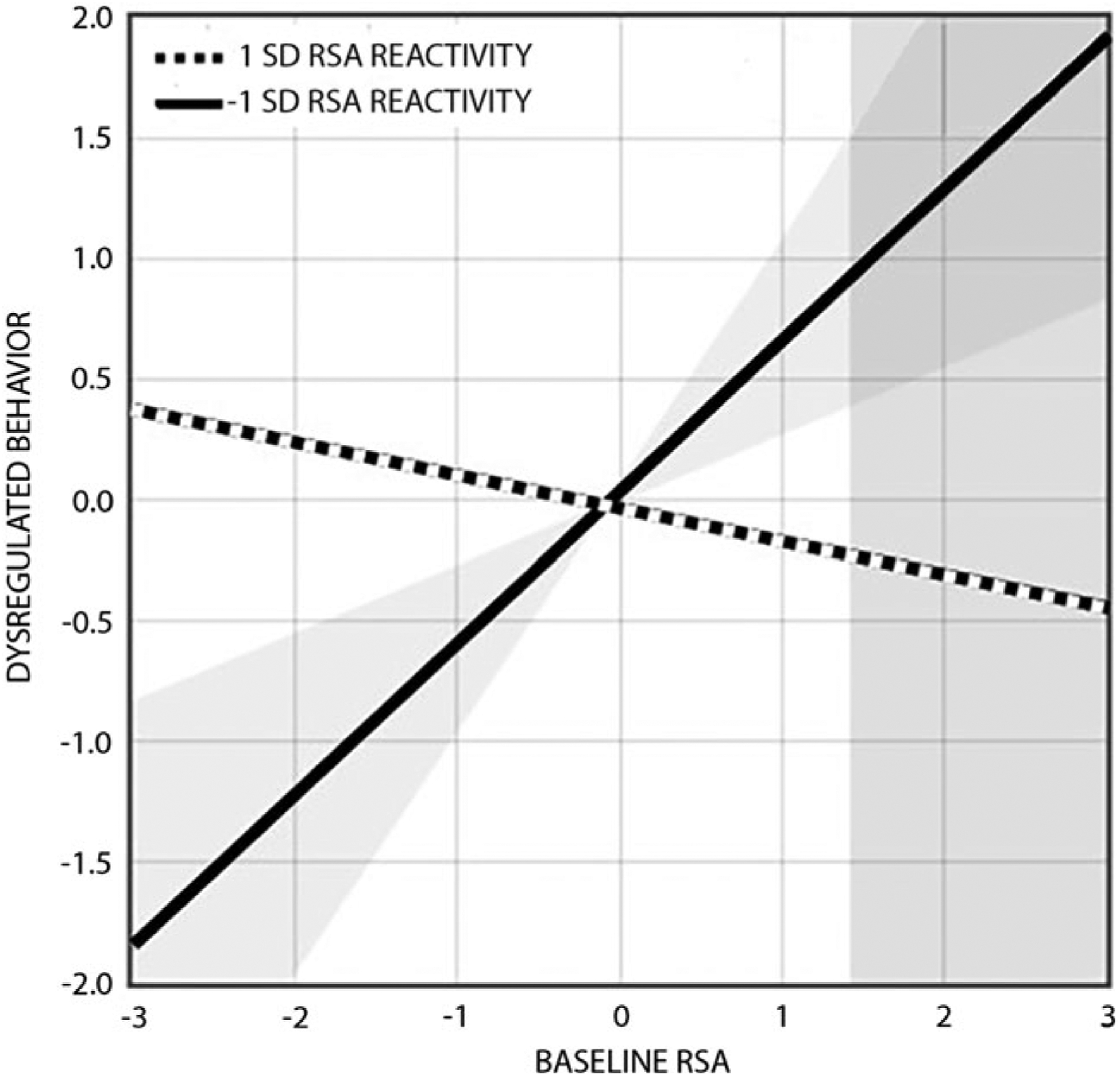Fig. 3.

RSA reactivity to parent-child conflict moderates the effect of baseline RSA on dysregulated behavior in daily life. Effects are shown at ±1 s.d. above and below the mean on RSA reactivity (mean = 0.31; s.d. = 0.64), with negative values reflecting RSA withdrawal and positive values reflecting RSA augmentation. Simple slopes analyses revealed that baseline RSA was related to dysregulated behavior as a function of RSA withdrawal (−1 s.d.: b = 0.62, s.e. = 0.25, p = 0.015), but not as a function of RSA augmentation (+1 s.d.: b = −0.13, s.e. = 0.18, p > 0.45). The overlapping shaded areas represent the point beyond which baseline RSA values (>1.42; sample range = −1.27–2.01) predict dysregulated behavior for youth with greater RSA withdrawal (<−0.09; sample range = −1.83–2.83).
